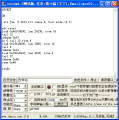ESP-01S
ESP-01S
Quick Start Guide ESP-01S
Module Pin Description ESP-01
- Normal mode: Normal boot from flash, normal working mode
- Flash mode: Firmware flash mode
| Pin | Working Mode | Flash Mode | Description |
|---|---|---|---|
| VCC, GND* | power supply, better use a standalone, and share ground with uart port | ||
| TXD, RXD** | uart interface | ||
| RST | Restart on low TTL | ||
| CH_PD | 1 | 1 | Chip select enable, constant High TTL always |
| GPIO 15 | 0 | 0 | Low TTL on boot , N/A for ESP-01 |
| GPIO0 | 1 | 0 | Switch working / flash mode |
| GPIO 2 | 1 | 1 | High TTL on boot |
| Red LEDs | (cancelled on latest) constants on to show the power status | ||
| Blue LEDs | blink when data come through |
Module wiring
- Use FT232RL can supply enough power, must be genius IC of course
- Swap the uart pins if no data show up on the monitor
- There are two leds on the board, one is power led (RED), another one is status LED(BLUE), when power up, pwr led keeps on and status led will blink once.
- baud rate may work at 9600 or 115200
Setup Check list
| Check list | Description |
|---|---|
| Check default wifi status | if your devices (e.g. your phone) can find a wifi spot named like "ESP_98529F", "AI-...." or similar, the later number part is the mac ID, if you can see this wifi spot, it means your module boot up successfully |
| check LED status and wiring | blue led will blink once on boot up, serial data output "ESP Ready", Tick "new line" option on USB-TTL serial port monitor tool, Try baudrate 9600 or 115200 default firmware use these two |
| Check power supply | use shared GND will standalone power supply |
| Check IO15 status | connect GPIO15 to GND on boot if you are using the SMD model |
- Use power source that can provide sufficient current, better not using power from USB-TTL module
- Module will automatically disconnect "unlink" TCP/UDP when no data go through
- Wifi password length must be more than 8 bytes






